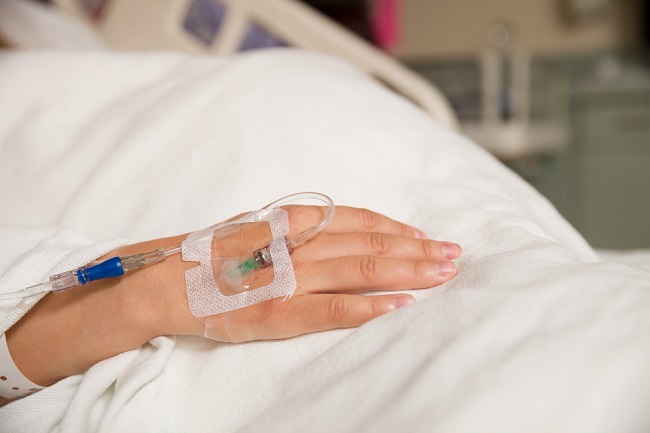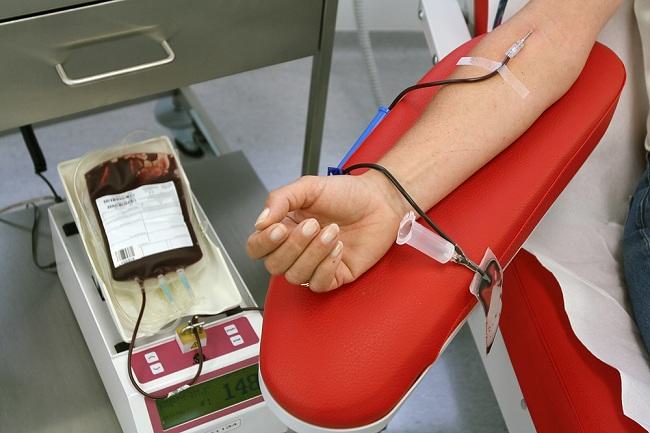Trachoma is an eye infection caused by bacteria Chlamydia trachomatis. A person can get this condition if they come into direct contact with an infected person, or if they touch their eyes after touching an object that has been exposed to the bacteria Chlamydia trachomatis.
Trachoma usually attacks the eyes and eyelids first, with initial symptoms of irritation and mild itching. However, if left untreated, trachoma can lead to serious complications including blindness. Keep in mind that blindness caused by trachoma is permanent and cannot be reversed.
Trachoma can infect children easily. However, the disease usually progresses very slowly. Symptoms can appear when the patient is growing up.

Symptoms of Trachoma
Symptoms of trachoma generally occur in both eyes, including:
- Itching and irritation of the eyes, including the eyelids.
- Eye pain.
- Feeling more sensitive to lightphotophobia).
- Swelling of the eyelids.
- Discharge from the eye that contains pus and mucus.
To identify the severity of trachoma, the WHO defines 5 stages of the disease's development, namely:
- Inflammationfollicular.This stage is the initial stage of the development of trachoma disease which is characterized by the appearance of follicles in the eye, which can be seen with the help of a magnifying glass. These follicles are shaped like small lumps containing white blood cells (lymphocytes), which are located on the inside of the upper eyelid.
- Severe inflammation. This stage is characterized by severe irritation and infection of the eye, accompanied by swelling and thickening of the upper eyelid.
- wound in inner eyelid. Infection and irritation in the earlier stages can cause sores on the eyelids. These sores can be seen with a magnifying glass which appear as white streaks. At this stage, the eyelids may change shape (distortion) and bend inward (entropion).
- Trichiasis.Trichiasis This occurs when the eyelid changes shape, causing the eyelashes to grow inward. Ingrown eyelashes can cause friction in the eye, especially on the cornea, so that the cornea becomes irritated and injured.
- Corneal clouding. Cornea that is irritated due to trichiasis can be affected by inflammation, so that it becomes cloudy. The cloudy cornea may not look as clear as a normal cornea.
Symptoms of trachoma will be more severe on the upper eyelid than on the lower eyelid. In severe trachoma, other parts of the eye, such as the tear glands, can become infected. If the tear glands are already affected by the symptoms of trachoma, tear production can decrease and cause dry eyes, so the symptoms of trachoma that occur can become more severe.
Causes of Trachoma
Trachoma is caused by a bacterial infection Chlamydia trachomatis on the eye. Chlamydia trachomatis is a gram-negative bacteria that can only live as a parasite in the tissues of the human body. Apart from bacteria Chlamydia trachomatis, other types of bacteria, such as Chlamydia psittaci and Chlamydia pneumoniae, It is also suspected to cause trachoma in humans.
Trachoma can be spread by direct or indirect contact. The spread of trachoma by direct contact can be through the eye and nose fluids of trachoma sufferers. Furniture used by sufferers everyday can also be a medium for the spread of trachoma. Examples are clothes, towels and handkerchiefs. Trachoma can also be spread through insects that often land in human feces.
Several other factors that also play a role in the transmission of trachoma are:
- Poor hygiene. A person who lives in an unsanitary environment can be more susceptible to trachoma. Unclean daily habits, such as not paying attention to facial and hand hygiene, can also facilitate the transmission of trachoma.
- Live in a slum neighborhood. A person who lives in a slum environment is more susceptible to trachoma because contact between residents in the area is more prone to occur.
- Living below the poverty line. People living below the poverty line or living in poor countries are more susceptible to trachoma than people living above the poverty line or living in developed countries.
- Children. Children who live in areas where there are trachoma sufferers are more susceptible to trachoma than adults
- Women are more susceptible to trachoma than men, one of which is because women often have contact with children.
- There is no adequate MCK. The absence of adequate MCK in a settlement, either private or public MCK, makes the transmission of trachoma between residents easier.
Trachoma Diagnosis
Doctors can suspect a patient has trachoma if there are symptoms, which are confirmed by a physical examination. To confirm the diagnosis, the doctor will perform a supporting examination in the form of a bacterial culture test. For this purpose, the doctor will take a sample from the eye, then send it to a laboratory for further examination.
Treatment and Prevention Trachoma
Trachoma treatment methods will focus on antibiotics and surgery. However, to aid healing, patients also need to undergo other treatment methods. WHO developed a series of trachoma treatment in the form of a SAFE strategy, which consists of:
- Surgery (psurgery). Surgery is performed to prevent complications of blindness due to trachoma, especially in patients who have entered the stage trichiasis. Eye surgery is performed by an ophthalmologist by repairing the injured eyelid so as not to aggravate irritation to the eye. If the cornea of the eye has become cloudy due to trachoma, trachoma patients can undergo a corneal transplant.
- Antibiotics(pgiveaway aantibiotics). Antibiotics are given to kill bacteria Chlamydia trachomatis causing trachoma in the patient. The antibiotics given are azithromycin or tetracycline. If in a residential area there are many children with trachoma, it is recommended that family members and the surrounding community also undergo treatment with antibiotics to prevent transmission.
- face cleaning(mkeep the facial area clean). Keeping the facial area clean can reduce the severity of trachoma suffered, especially in children. In addition, by keeping the facial area clean, the spread of trachoma can be reduced.
- Environmental improvement(mkeep the environment clean). This step aims to maintain the cleanliness of the environment where trachoma sufferers live, especially the cleanliness of the water. Another major step is to prevent the disposal of feces in any place that can increase the spread of trachoma. To prevent the spread of this disease through insects, families and communities around the sufferer are also recommended to use a fly repellent around the house.
Complications of trachoma
Trachoma infection that is not treated immediately or occurs repeatedly can lead to serious complications. Some of them:
- Scar tissue on the inner surface of the eyelid.
- Changes in the shape of the eyelids. The eyelids may fold inward (entropion) or the eyelashes may grow inward (trichiasis).
- Scar tissue on the cornea of the eye or corneal ulcer.
- Decreased visual acuity to blindness.









